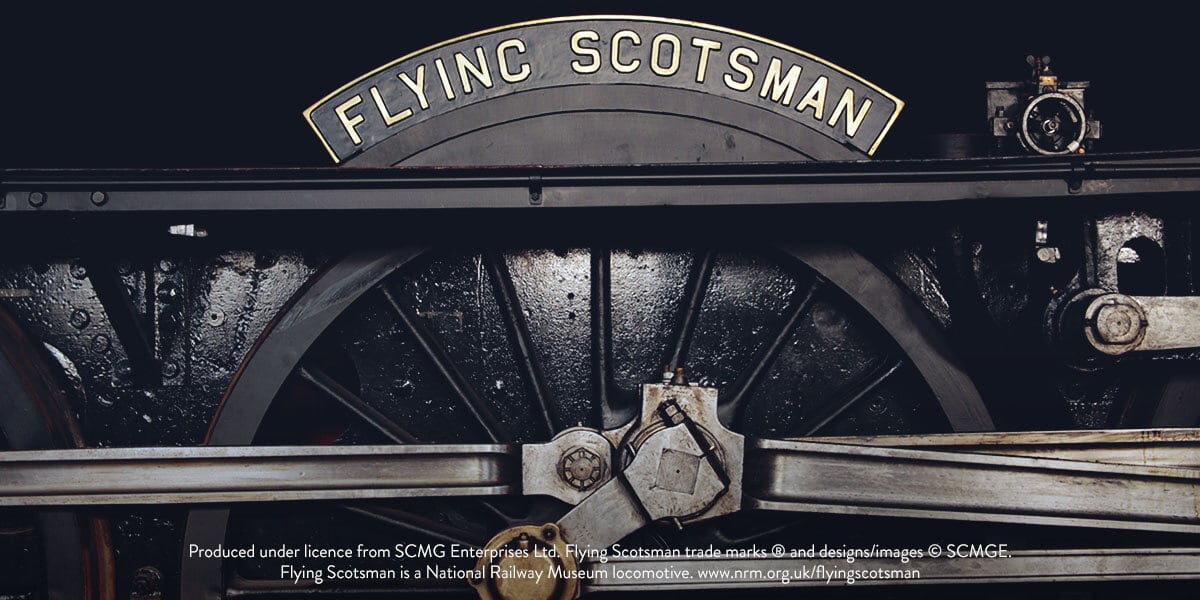Flying Scotsman, a steam locomotive that represents British ingenuity and craftsmanship at its finest, marks its centenary in 2023. Historically, the locomotive played a pivotal role in linking the cities of London and Edinburgh and, despite its official retirement from service in 1963, its popularity has endured with the British public and railway enthusiasts alike.

A Famous Namesake
Flying Scotsman’s namesake, an express train service that connected London to Edinburgh on the East Coast Main Line, played a central role in fuelling the locomotive’s fame. Frequent passengers of the train service, which started in 1862, included businessmen, diplomats, politicians, soldiers, and even the famous novelist Charles Dickens on occasion. In its heyday in the 1930s, it cultivated a reputation for luxury and style, as the train service offered hairdressing salons, ladies’ retiring rooms, air conditioning, ‘health giving’ windows, all-electric kitchens, a Louis XV–style restaurant and a cocktail bar.
The train also boasted a reputation for speed and, according to an article by The Oxford Times, became known as the ‘Flying Scotchman’ from at least 1864 due to the rate at which it travelled. Whilst the locomotive borrowed the name of the train service, Flying Scotsman went its own way of earning an association with speed.

Hauling the Past to the Present
A major element of Flying Scotsman’s sustained popularity is how it is symbolic of a bygone era, where steam trains and locomotives were a staple of British travel and, for a time, represented the pinnacle of British transport excellence.
There’s something romantic about steam billowing from a locomotive as it traversed the British countryside. This nostalgic appeal helped popularise the locomotive’s title of ‘the most famous steam locomotive in the world’, a notion echoed by John Noakes in 1966 on Blue Peter, the BBC’s flagship children’s television programme. An impressive 7 million viewers watched the programme at the time and the sentiment came during a period where children were writing into the programme despairing over the withdrawal of steam locomotives. In fact, the number of steam locomotives on British railways had more than halved from 18,600 to 8,800 by 1962, and this came about because of a modernisation programme launched by British Railways in 1955. By September 1968, there were no steam locomotives in use on the main lines of the UK.
Whilst progress was being made, some of the public yearned for a romantic revival of the great age of steam, and Flying Scotsman became the figurehead for transporting the public to the past, and remains so today.
Related articles

Flying Scotsman trademarks ® SCMG/ designs ©SCMG. Flying Scotsman is a National Railway Museum locomotive. www.railwaymuseum.org.uk





